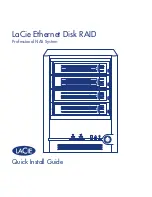
Configure the device using the ConnectPort LTS web interface
Configuration through the web interface
Digi ConnectPort LTS User Guide
78
n
Secure LDAP
: Allows you to enable Secure LDAP for LDAP servers. The default is Disable. Only
LDAP servers require this option.
Note
Default permissions for authenticated remote users are defined under the user name
ruser
.
n
PPP User
: Select the PPP user you want to allow to sign in to the serial port. Select ANYBODY if
you want to allow multiple users to sign in to the serial port. This field is enabled when you
assign the Modem profile to the serial port. To add PPP users to this drop-down list, configure
Incoming PPP Connections
(
Application
>
PPP
>
Incoming PPP Connections
.
Alarms Configuration
Use the Alarms Configuration page to configure device alarms and displaying alarm settings. Device
alarms send email messages or SNMP traps when certain device events occur. These device events
include data patterns detected in the data stream.
Alarm notification settings
Use the Alarm Notification Settings page to configure the following:
n
Enable alarm notifications:
Enables or disables all alarm processing for the Digi device.
Alarm list and status
The
Alarm Conditions
page lists all of the alarms. You can configure up to 32 alarms for a Digi device,
and you can individually enable and disable these alarms.
The alarm list displays the current status of each alarm. You can use this list to view alarm status at a
glance, then view more details for each alarm as needed.
n
Enable
: The check box indicates whether the alarm is currently enabled or disabled.
n
Alarm
: The number of the alarm.
n
Type
: The basis for the alarm; whether it is based on serial data pattern matching.
n
Trigger
: The conditions that trigger the alarm.
n
SNMP Trap
: Indicates whether the alarm is sent as an SNMP trap.
l
If the
SNMP Trap
field is disabled, and the
Send To
field has a value, the alarm is sent as an
email message only.
l
If the
SNMP Trap
field is enabled and the
Send To
field is blank, the alarm is sent as an
SNMP trap only.
l
If the
SNMP Trap
field is enabled, and a value is specified in the
Send To
field, that means
the alarm is sent both as an email and as an SNMP trap.
n
Send To
: The email address to which the alarm is sent.
n
Email Subject
: Text to include in the
Subject
line of alarms sent as email messages.
Alarm Conditions
Use the Alarm Conditions page to specify the conditions on which the alarm is based Alarm conditions
include:
















































